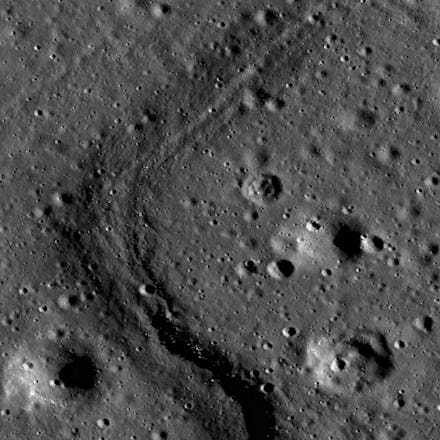Scientists are pretty sure that deep inside the moon, there’s water

While Earth’s surface cracks and spouts fire, the moon’s surface, for as long as we’ve known it, has been quiet. The very youngest sign of volcanic activity scientists have found on the moon’s surface is 18 million years old. While that means the moon probably hasn’t lost its volcanic vibe entirely, it isn’t likely to erupt any time soon.
But the traces of that long-ago volcanic activity could help scientists crack an enduring mystery: How much water is on the moon? A study published Monday in Nature Geoscience suggests it may be more than we thought.
Humans are entranced by water anywhere in our solar system, searching for its tiniest traces on Mars, distant moons and small asteroids.
Unlike those more exotic destinations, men have walked on the moon, and the souvenirs they brought back contain water, trapped in small crystals of volcanic glass. But although six Apollo missions stepped out on our celestial companion, they were clustered along the central band of the near side of the moon. What if it was just a fluke the rocks they brought home held so much water?
So Shuai Li, then a Ph.D. student at Brown University, and his adviser Ralph Milliken decided to try to get the larger picture on lunar water.
They turned to data sent to Earth by an instrument called the Moon Minerology Mapper, which India carried into orbit around the moon for NASA almost a decade ago. The same data let scientists confirm in 2009 that there was water at the poles, lurking frozen in dark craters.
But because the instrument measured reflected light, its results are harder to use away from the poles, where the moon’s surface heats up during the day and interferes with the data. So Li had to figure out how to manipulate the data to ignore the heat signal and isolate just the reflected light.
Once he knew where water was most common, he could test some hypotheses about how that water got there. One theory held that water was hand-delivered to the moon aboard the rocks that have scarred its surface.
But Li’s map showed that the areas with the most water weren’t located at impact craters — instead, they lined up with where ancient lava flowed. Li and Milliken believe that means the water came from the moon’s mantle, the then-liquid middle layer of the moon that, like Earth’s mantle still does, fueled eruptions.
Nailing down how much water was where throughout the moon’s history might help scientists figure out how the moon formed.
Li also said in an email that he thinks the surface water could be an important resource for future explorers. Although even the most water-rich areas aren’t that wet (water makes up less than 0.05% of the weight of the rocks Li was looking at), the lava deposits could cover hundreds of square miles, so that small percentage adds up. He added that at the equator, they’ll be easier to tap than the polar ice.